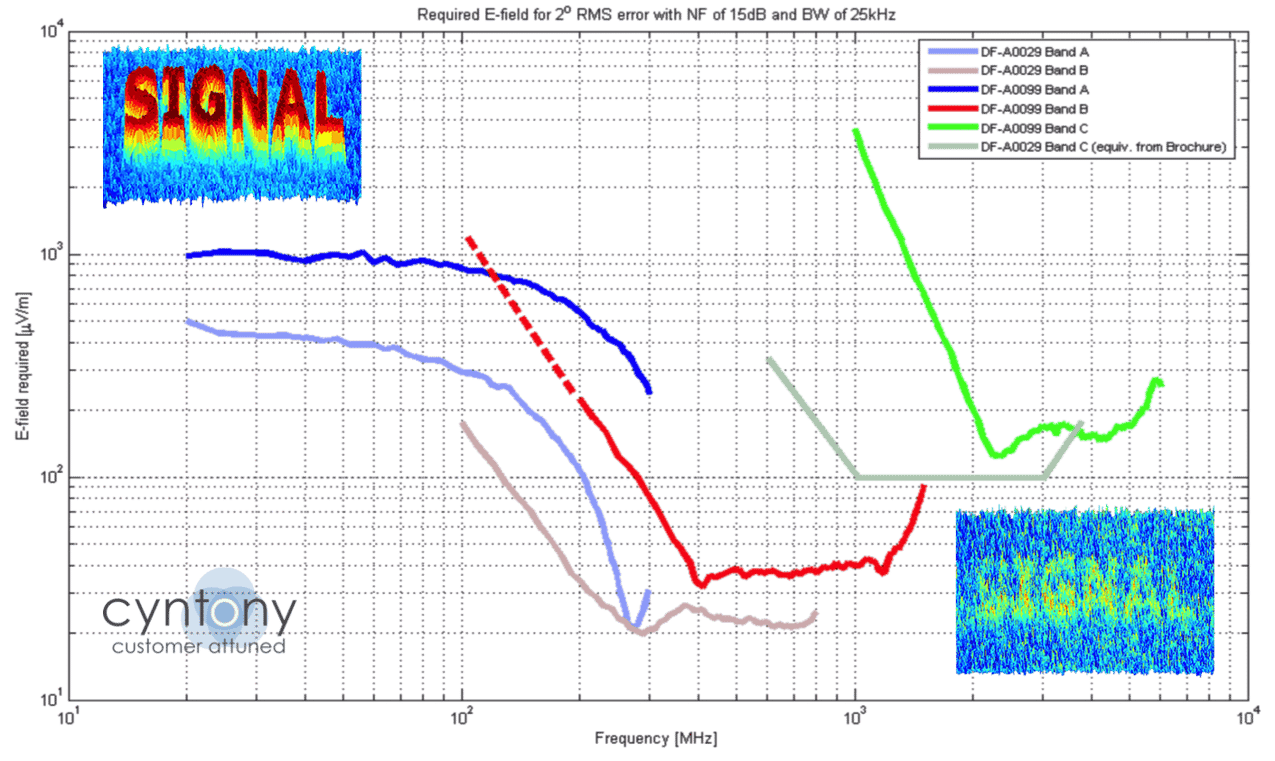When evaluating relative merits of a direction finding system, most folks focus on 'accuracy,' which is generally a measure of the quality of the angle of arrival (AoA) estimate in large signal conditions.
But not all signals are loud and proud!
Importance of DF Sensitivity
It is also important to consider DF sensitivity—a measure of the weakest discernible signals that a receiving system can detect and process.
Sensitivity of the DF system is, therefore, a measure of the incident field strength at the antenna that guarantees a tolerable AoA estimation error while ensuring wild bearing probability below an acceptable value.
Sensitivity Specs: Things to Know
The benefit of a sensitivity spec is that it accounts for the gain of the individual antenna elements, aperture size and suitability of the DF antenna patterns to work with a direction finding processing scheme.
Note, sensitivity specification alone may not be enough information to determine the amount of averaging employed in the stated sensitivity. This can make it difficult to compare DF sensitivity as quoted by different suppliers.
Estimates and Standardizations
Many systems make use of averaging to improve estimates (and thereby AoA accuracy). With enough averaging, it is possible to produce any sensitivity one desires. Alaris Antennas standardizes DF sensitivity calculations by applying a noise figure of 6dB in the receiver with a 1Hz system bandwidth and no averaging.
Visualizing Sensitivity
An illuminating aspect of this approach to sensitivity specification is that it can be expressed in a graph versus frequency, as show below.
 One can see how the required incident field strength (expressed in microvolts per meter) has a sweet spot in each frequency band bounded by the low end (as the antenna elements become electrically too small), and the high end (where wild bearings from the DF algorithm begin to dominate).
One can see how the required incident field strength (expressed in microvolts per meter) has a sweet spot in each frequency band bounded by the low end (as the antenna elements become electrically too small), and the high end (where wild bearings from the DF algorithm begin to dominate).
Interpreting Sensitivity vs Frequency
Another way to interpret this graph is: for the low frequency end of band's range, more signal strength is required to balance degradations from lower antenna gain and closer element spacing as a function of wavelength. At the high end of a band's range, wild bearing estimates increase as propagation effects like side-scatter, hop or ionospheric effects at HF begin to dominate.
Sensitivity can also be plotted for various possible desired RMS AoA accuracies to get a feeling for the accuracy degradation versus field strength.
Learn More
If you'd like to learn more about accuracy, sensitivity, and calibration techniques used to refine performance of interferometric direction finding antenna systems, check out our informative white paper:




